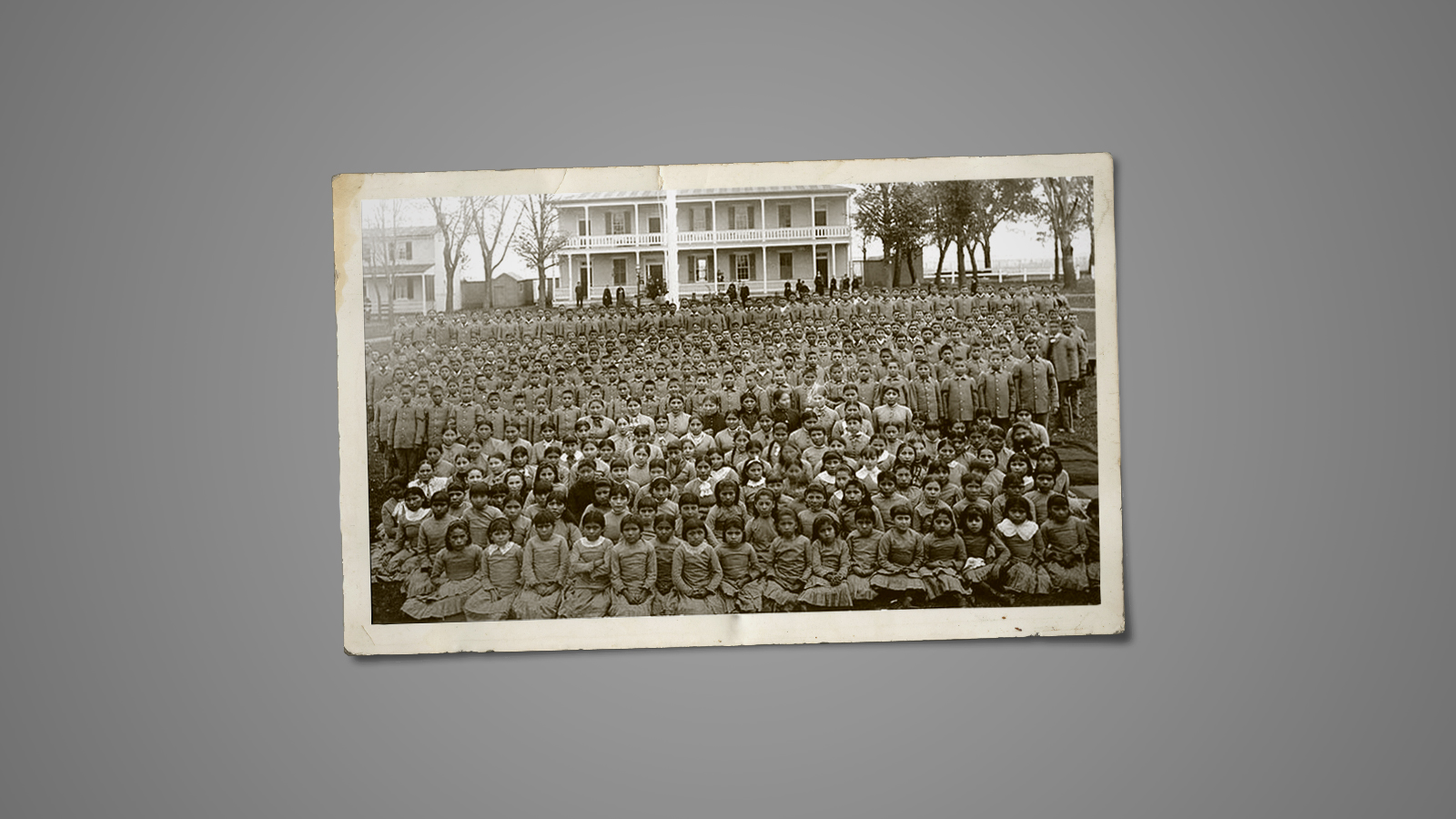The investigation that will change how America thinks about its past
Uncovering the abuses of Indigenous boarding schools will be Deb Haaland's most important legacy


Secretary of the Interior is not one of the sexier Cabinet positions. Unlike the Secretary of State, it isn't a stepping-stone to the presidency; the position has neither the prestige of Defense nor the quiet power of the Treasury. Most Americans don't even tend to be aware of who their Interior Secretary is, even when the bureaucrat happens to screw up so spectacularly that he briefly earns himself a "scandal tracker" on the website of Outside magazine.
It was unusual, then, when New Mexico Rep. Deb Haaland made national headlines after becoming the first Native American to be confirmed to any Cabinet post. For many environmental- and social-justice-minded onlookers, the appointment of Haaland — a "35th generation New Mexican" and Pueblo of Laguna tribal member — to lead the department that oversees about one-fifth of the stolen land that makes up the United States was an important and long-overdue landmark.
But to Haaland, representation alone isn't the be-all-end-all of her mission in the unassuming department. Last week, she announced that for the first time, the United States will search the grounds of its former Indigenous boarding schools for the remains of children who for over a century were forcibly taken from their families and brutally stripped of their culture (including Haaland's grandparents). The move will mean a serious national reckoning among non-Indigenous Americans about the cultural genocide in our not-so-distant past, and the revelations, conversations, and policies that could ensue set Haaland up to be one of the most consequential Interior Secretaries in modern history.
The Week
Escape your echo chamber. Get the facts behind the news, plus analysis from multiple perspectives.

Sign up for The Week's Free Newsletters
From our morning news briefing to a weekly Good News Newsletter, get the best of The Week delivered directly to your inbox.
From our morning news briefing to a weekly Good News Newsletter, get the best of The Week delivered directly to your inbox.
The horrors of the boarding school system are an open topic in Canada where, earlier this year, the remains of 215 Indigenous children were found in a mass grave at the Kamloops Indian Residential School in British Columbia. That sickening announcement was followed last week by the report of an additional 751 unmarked graves of children found near a residential school in Saskatchewan. Already this week, another 182 graves were found at a former school east of Vancouver, Canada. In total, an estimated 6,000 children are thought to have died at schools in Canada, while "it's likely that the number of students who died in the United States is much higher," Christine Diindiisi McCleave, the executive director of the National Native American Boarding School Healing Coalition (NABS), told High Country News.
Only, our government hasn't started looking yet. Canada is "probably over a decade ahead of us on this, trying to build some sort of public acknowledgment of just how horrific these schools were for the children who were forced to go there," Nick Martin, a member of the Sappony tribe, explained to The Takeaway recently. And while it now falls under Haaland's jurisdiction to shine a light on this great sin in American history, the great irony is that it was the department she now leads that originally perpetuated these evils; as Megan Black writes in The Global Interior: Mineral Frontiers and American Power, the Department of the Interior carried out the "spadework" of settler colonialism in America, with the responsible Office of Indian Education Programs falling under the department's broad umbrella.
Phrases like "Indian education" and "boarding school" fail to accurately describe the institutions and their aims, though. For years, Native children were required by Congress to attend the schools — the Bureau of Indian Affairs was authorized to withhold food rations and supplies from families that refused to enroll their children — and the atrocities remain largely unknown to many non-Indigenous Americans. Physical and sexual abuse was common in the schools; disease was rampant, as was malnutrition. "The schools also extensively utilized an 'outing' program that retained students for the summer and involuntarily leased them out to white homes as menial laborers," MinnPost writes.
In truth, the 367 boarding schools in operation in the U.S. were camps of strategic cultural genocide:
A free daily email with the biggest news stories of the day – and the best features from TheWeek.com
This is what achieving civilization looked like in practice: Students were stripped of all things associated with Native life. Their long hair, a source of pride for many Native peoples, was cut short, usually into identical bowl haircuts. They exchanged traditional clothing for uniforms, and embarked on a life influenced by strict military-style regimentation. Students were physically punished for speaking their Native languages. Contact with family and community members was discouraged or forbidden altogether. Survivors have described a culture of pervasive physical and sexual abuse at the schools. Food and medical attention were often scarce; many students died. Their parents sometimes learned of their death only after they had been buried in school cemeteries, some of which were unmarked. -The Atlantic
Canadian journalist Jessica McDiarmid, in her recent book Highway of Tears, makes a convincing case that the North American epidemic of missing and murdered Indigenous women is part of the continued legacy of the trauma that stems from these programs. The horrors of the boarding schools, after all, do not belong to some dusty and distant past; "it was not until 1978 with the passing of the Indian Child Welfare Act that Native American parents gained the legal right to deny their children's placement in off-reservation schools," the American Indian Relief Council writes. This is modern history, and the survivors of the atrocities are still here.
Under Haaland's direction, the United States' search for children's remains at or near the boarding schools, and the subsequent public reckoning with those truths, might not be far away. It is "a testament to Secretary Haaland's obviously overwhelming support for tribal consultation and listening to what tribal communities need," Martin goes on in his interview with The Takeaway, "but it's also an indictment of every Interior official who came before her in a leading position who chose not to take similar action."
It's taken over a century of Interior Secretaries from both parties to even reach this very first step of beginning to look for the truth, and helping families and communities of victims to reach some sort of resolution.
Haaland assumed leadership of the Department of the Interior during one of the most important moments in its history; she inherits the devastation done to federal lands by the Trump administration as well as the raging climate crisis. But it is exposing the monstrous facts of our nation-building that might be her greatest legacy by the close of her historic tenure. The cultural genocide waged on Indigenous children — children — by this nation isn't something to merely symbolically recognize and move on from; it is a national inheritance that is painful and alive. It will be hard for many Americans to accept. But shame can help us do what is right going forward and prevent future humanitarian crimes that are ghostly echoes of this history.
Haaland recognized that the work to be done requires more than a weak apology from the government. "I know that this process will be long and difficult," she confirmed. "I know that this process will be painful. It won't undo the heartbreak and loss that so many of us feel." But it is time.
Jeva Lange was the executive editor at TheWeek.com. She formerly served as The Week's deputy editor and culture critic. She is also a contributor to Screen Slate, and her writing has appeared in The New York Daily News, The Awl, Vice, and Gothamist, among other publications. Jeva lives in New York City. Follow her on Twitter.
-
 Hegseth rejects release of full boat strike footage
Hegseth rejects release of full boat strike footageSpeed Read There are calls to release video of the military killing two survivors of a Sept. 2 missile strike on an alleged drug trafficking boat
-
 ‘It’s another clarifying moment in our age of moral collapse’
‘It’s another clarifying moment in our age of moral collapse’Instant Opinion Opinion, comment and editorials of the day
-
 Trump vows naval blockade of most Venezuelan oil
Trump vows naval blockade of most Venezuelan oilSpeed Read The announcement further escalates pressure on President Nicolás Maduro
-
 How Bulgaria’s government fell amid mass protests
How Bulgaria’s government fell amid mass protestsThe Explainer The country’s prime minister resigned as part of the fallout
-
 Femicide: Italy’s newest crime
Femicide: Italy’s newest crimeThe Explainer Landmark law to criminalise murder of a woman as an ‘act of hatred’ or ‘subjugation’ but critics say Italy is still deeply patriarchal
-
 Brazil’s Bolsonaro behind bars after appeals run out
Brazil’s Bolsonaro behind bars after appeals run outSpeed Read He will serve 27 years in prison
-
 Americans traveling abroad face renewed criticism in the Trump era
Americans traveling abroad face renewed criticism in the Trump eraThe Explainer Some of Trump’s behavior has Americans being questioned
-
 Nigeria confused by Trump invasion threat
Nigeria confused by Trump invasion threatSpeed Read Trump has claimed the country is persecuting Christians
-
 Sanae Takaichi: Japan’s Iron Lady set to be the country’s first woman prime minister
Sanae Takaichi: Japan’s Iron Lady set to be the country’s first woman prime ministerIn the Spotlight Takaichi is a member of Japan’s conservative, nationalist Liberal Democratic Party
-
 Russia is ‘helping China’ prepare for an invasion of Taiwan
Russia is ‘helping China’ prepare for an invasion of TaiwanIn the Spotlight Russia is reportedly allowing China access to military training
-
 Interpol arrests hundreds in Africa-wide sextortion crackdown
Interpol arrests hundreds in Africa-wide sextortion crackdownIN THE SPOTLIGHT A series of stings disrupts major cybercrime operations as law enforcement estimates millions in losses from schemes designed to prey on lonely users
